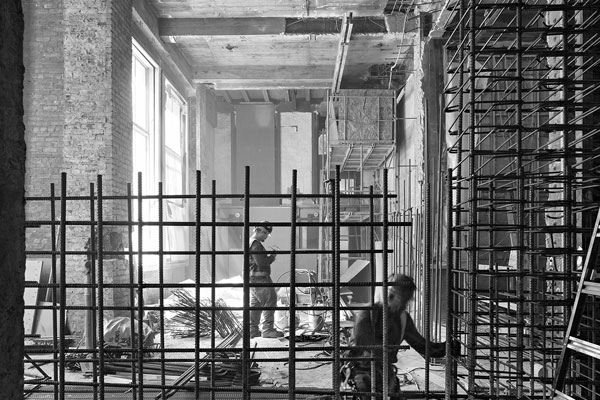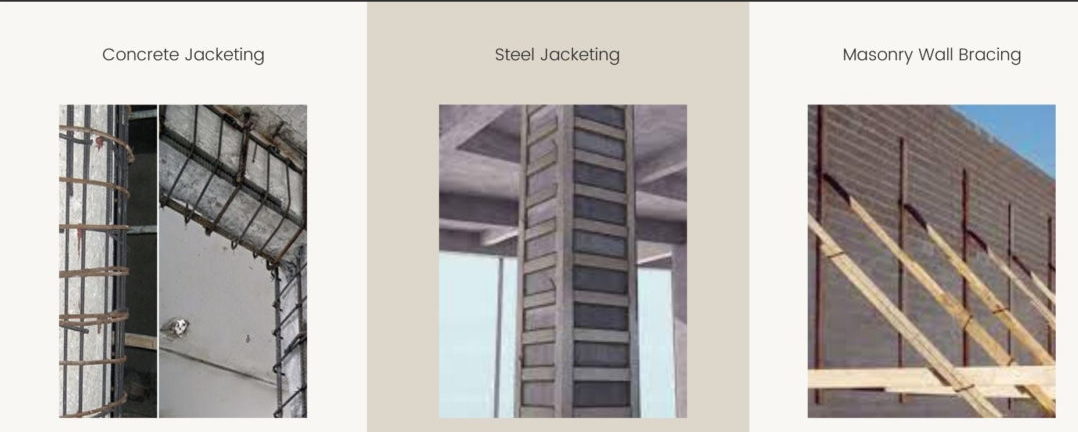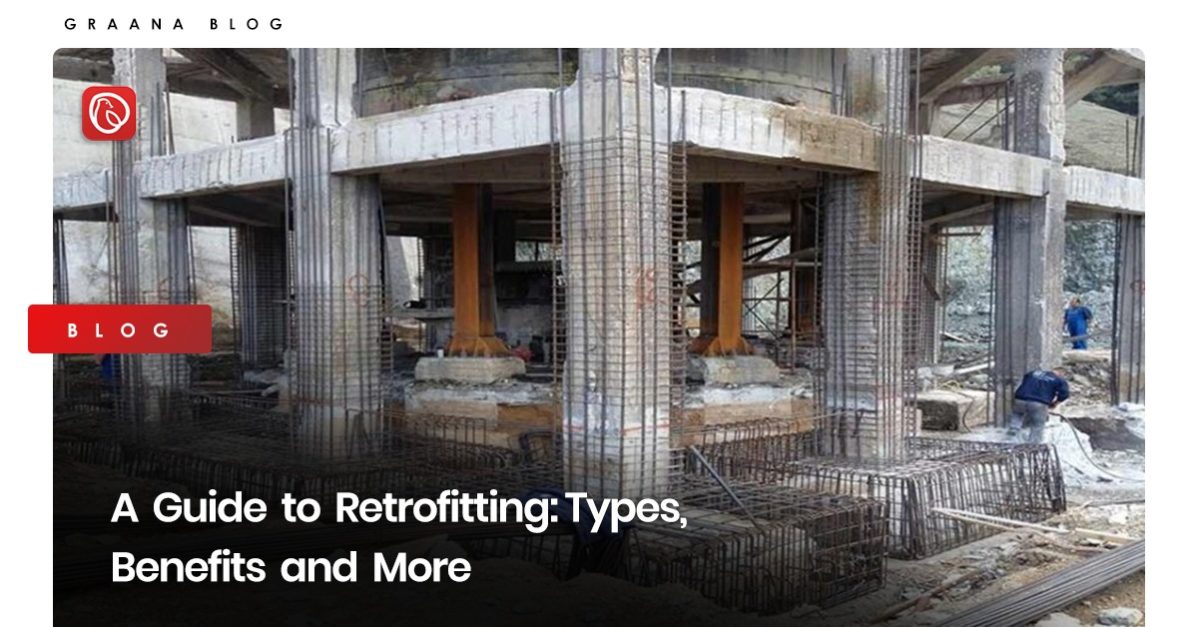Retrofitting is the process of upgrading an existing building or structure to improve its performance, functionality, and energy efficiency. It can be done for various reasons, such as to comply with new building codes, improve the building’s durability, enhance occupant comfort and safety, and reduce energy costs.
Graana.com has gathered information on different types of retrofitting, their benefits, and the involved process below.
Retrofitting in Construction

The construction sector is transforming technologies yearly, and retrofitting has become a crucial concept in this field. Retrofitting is highly advantageous as it allows old buildings to be revived and equipped with the latest technological advancements to ensure their efficiency and longevity. It also ensures the safety of the occupants.
Additionally, retrofitting is a cost-effective solution as it eliminates the need for complete redevelopment, which is a more expensive and time-consuming process that requires significant resources and energy.
Types of Retrofitting

The different approaches for retrofitting a structure can be classified as follows:
Local Retrofitting
Local retrofitting involves strengthening or upgrading individual components of a building, such as beams, columns, and footings. This approach is often used when only specific parts of a building need to be improved, rather than the entire structure. Some examples of local retrofitting techniques include:
- Jacketing of Beams: This involves wrapping a steel or concrete jacket around an existing beam to increase its strength and load-carrying capacity. The jacket is typically anchored to the existing beam using steel bolts or epoxy.
- Jacketing of Beam-Column Joints: Beam-column joints are critical components of a building’s structural system, and failure at these joints can lead to catastrophic collapse. Jacketing these joints involves adding steel or concrete elements to increase their strength and ductility.
- Strengthening Individual Footings: Footings are the parts of a building’s foundation that transfer the weight of the structure to the ground. If a building’s footings are weak or inadequate, it can lead to settlement and structural damage. Strengthening individual footings involves adding additional concrete or steel to increase their load-carrying capacity.
- Jacketing of Columns: Columns are vertical structural members that support the weight of the building above. Jacketing involves adding steel or concrete elements to increase their strength and ductility, which can help prevent collapse in the event of an earthquake or other disaster.
Global Retrofitting
Global retrofitting involves upgrading or improving the entire structure of a building, rather than individual components. This approach is often used when a building is old or has significant structural deficiencies that require major intervention.
Some examples of global retrofitting techniques include:
- Adding Shear Walls: Shear walls are vertical structural elements that resist lateral loads, such as wind and earthquake damage. Adding shear walls to a building can significantly increase its resistance to seismic events and other disasters.
- Adding Infill Walls: Infill walls are non-structural walls that are added to a building’s existing frame to increase its stiffness and strength. They are typically made of reinforced concrete or masonry and can be added to both exterior and interior walls.
- Mass Reduction: This technique involves removing some of the non-structural components of a building to reduce its overall weight and increase its seismic resistance. Examples of non-structural components that can be removed include suspended ceilings, partitions, and cladding.
- Wall Thickening: Wall thickening involves adding additional layers of concrete or masonry to existing walls to increase their strength and load-carrying capacity.
- Adding Brace: Braces are structural elements that resist lateral loads by transferring forces to the ground. Adding braces to a building can significantly improve its resistance to seismic events and other disasters.
The choice of retrofitting technique will depend on the specific needs and condition of the building, as well as the available resources and budget.
Advantages of Retrofitting
The following are some benefits of retrofitting:
Improved Energy Efficiency
Upgrading insulation, windows, and doors and installing high-efficiency heating and cooling systems can reduce a building’s energy consumption by up to 30%.
Increased Property Value
By improving its structural integrity, energy efficiency, and safety, a building can become more desirable to potential buyers and tenants.
Reduced Maintenance Costs
By upgrading its structural components, energy systems, and safety features, a building will require less maintenance and repairs in the long run.
Enhanced Comfort and Safety
By improving insulation, ventilation, and lighting, a building can provide a more comfortable indoor environment for its occupants. By upgrading its structural components and safety features, it can reduce the risk of collapse during natural disasters.
Disadvantages of Retrofitting
The following are some drawbacks of retrofitting:
Cost
Retrofitting can be a costly process that requires a significant investment of time and money. The cost of it depends on the type of upgrades required and the complexity of the building. In some cases, retrofitting can even be more expensive than building a new structure from scratch.
Disruption
Retrofitting can be disruptive to the occupants of the building. The process may require the temporary relocation of occupants or the suspension of operations, which can cause inconvenience and loss of productivity. It can also cause noise, dust, and debris, which can affect the quality of life of the occupants.
Structural Integrity
Retrofitting can sometimes compromise the structural integrity of the structure. The addition of new elements or modifications can alter its load-bearing capacity, leading to unexpected failures or collapses.
This is why retrofitting should always be carried out by experienced professionals who have a thorough understanding of the building’s structural design and capabilities.
Limited Scope
Retrofitting may not always be able to address all the issues with the building. Some problems may require more extensive renovations or even a complete overhaul.
Aesthetics
Retrofitting can sometimes compromise the aesthetic appeal of the building or structure. The addition of new elements or modifications may not match the original design or style, leading to an unappealing appearance. This can also negatively impact the value of the property.
Regulatory Compliance
Retrofitting may be subject to regulatory compliance requirements, such as building codes, safety standards, and environmental regulations. Failure to comply with these can lead to legal penalties and liabilities. It may require obtaining permits and approvals, which can add to the time and cost of the project.
You should carefully consider several disadvantages of retrofitting before embarking on the process. It is crucial to weigh its benefits and drawbacks, and consult with professionals to determine the best course of action for the particular needs of the structure.
Process of Retrofitting
The entire process of retrofitting involves the following steps:
Assessment
The first step in the retrofitting process is to assess the building’s current condition and identify improvement areas. This may involve a structural assessment, energy audit, or accessibility audit.
Planning
Once you complete the assessment, you can develop a retrofitting plan. The plan should outline the specific upgrades that you will make, the timeline for completion, and the budget.
Implementation
The implementation phase involves carrying out the retrofitting plan. This may involve hiring contractors, obtaining necessary permits, and scheduling.
Monitoring
After the retrofitting work is complete, it is important to monitor the building’s performance to ensure that the upgrades are effective and efficient. This may involve regular energy audits, structural assessments, or accessibility audits.
Follow Graana blog for more related content.
Read More
Creative Bathroom Mirror Design Ideas




